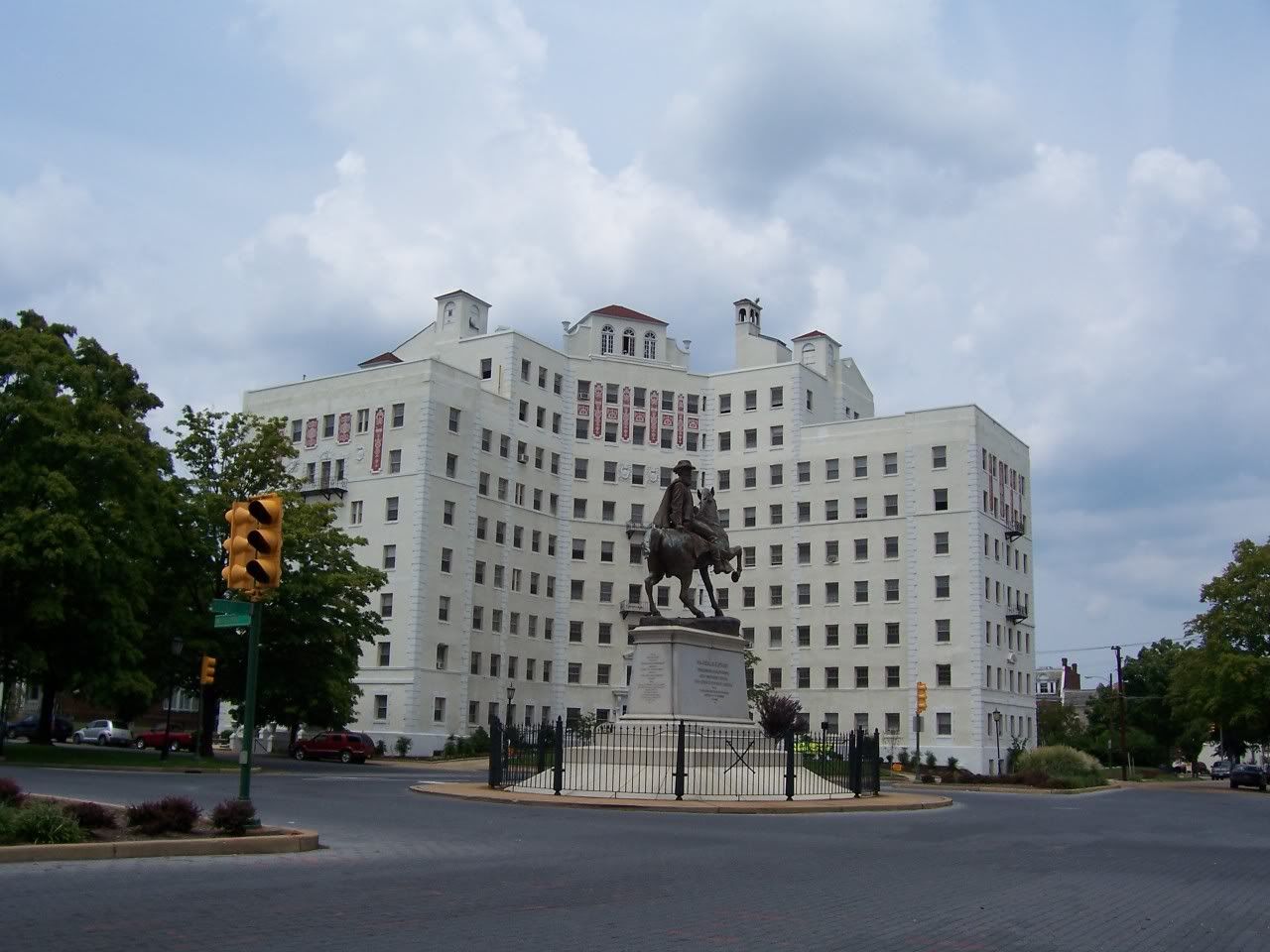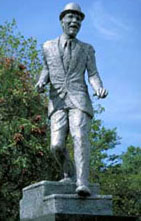Synchronicity is a concept, first introduced by analytical psychologist Carl Jung, which holds that events are “meaningful coincidences” if they occur with no causal relationship yet seem to be meaningfully related. (Wikipedia)
Early Sunday morning I received an email from a reader asking if I was aware of the protest in Charlottesville, Virginia (where we both attended the University of Virginia), led by white nationalist Richard Spencer. The demonstrators were challenging the removal of a statue of Confederate General Robert E. Lee from a public park.
Make no mistake about it, this protest was not about the removal of a statue. At the first of two rallies, Spencer excited the crowd when he said, “What brings us together is that we are white, we are a people, we will not be replaced.” At the evening rally, protesters shouted, “Russia is our friend.” (Source: Washington Post/May 14, 2107) Disposition of the statue was a convenient excuse to promote hatred and division. Such behavior should be abhorrent to all Americans.
 Yet, at some level, I am uncomfortable with the urgency by some to remove statues of confederate leaders, notably President Jefferson Davis, and military officers such as General Lee. Perhaps it was the circumstances of my birth and early years. I was born in Richmond, Virginia, the capital of the Confederacy. More specifically, my first breath was taken at Stuart Circle Hospital, named after the statue of General J.E.B. Stuart which stands in the center of the roundabout on which the hospital was located. I attended Thomas Jefferson High School and Mr. Jefferson’s University (as we affectionately referred to UVA). My maternal grandmother lived on Monument Avenue, you guessed it, so-named for the statues of Stuart, Davis, Lee and Stonewall Jackson.
Yet, at some level, I am uncomfortable with the urgency by some to remove statues of confederate leaders, notably President Jefferson Davis, and military officers such as General Lee. Perhaps it was the circumstances of my birth and early years. I was born in Richmond, Virginia, the capital of the Confederacy. More specifically, my first breath was taken at Stuart Circle Hospital, named after the statue of General J.E.B. Stuart which stands in the center of the roundabout on which the hospital was located. I attended Thomas Jefferson High School and Mr. Jefferson’s University (as we affectionately referred to UVA). My maternal grandmother lived on Monument Avenue, you guessed it, so-named for the statues of Stuart, Davis, Lee and Stonewall Jackson.
I wondered. How would I feel if suddenly all of the statues on Monument Avenue were removed? This is the culture and the history of the city in which I grew up. And while there are those, like Richard Spencer, who still view the subjects of these likenesses as heroes, the majority of Americans do not. And I understand how the grandchildren and great-grandchildren of slaves take offense at the presence of what is a reminder the United States was less than a “more perfect union” for their ancestors.
And then it hit, a moment of sychronicity. Where else had I observed outrage at the removal or destruction of historic symbols? In Iraq and Syria. A quick Google search produced a September 1, 2015 article on the National Geographic website titled, “Here Are the Ancient Sites ISIS Has Damaged and Destroyed.” Referring to the obliteration of historic ruins, Andrew Curry wrote:
The destruction is part of a propaganda campaign that includes videos of militants rampaging through Iraq’s Mosul Museum with pickaxes and sledgehammers, and the dynamiting of centuries-old Christian and Muslim shrines.
I know. No one is advocating destruction of statues depicting political or military leaders of the Confederacy. They just want them removed to more “appropriate” places like museums. But that demeans their value. Not as honoring heroes, but as curiosities. They should evoke questions not just about the Civil War itself, but why residents of the former confederate states felt it necessary to continue to celebrate a losing cause. For the intellectually curious, the presence of these statues are also memorials to Jim Crow, Segregation Forever and Poll Taxes. As they say, “Out of sight; out of mind.”
We need not wait millennia to regret the loss of these artifacts of American history. We can view them as “modern antiquities” (an oxymoron?). They are shrines to the Civil War and individuals who participated on both sides of a conflict, without which there might still exist two separate nations within the continental United States. And I can’t help but wonder what other consequences such an arrangement might have had on this planet. For example, could either the remaining United States or the Confederacy become the powerful ally Europe needed to defeat Nazi Germany?
 There is another statue in Richmond at the corner of Leigh and Adams Streets. It celebrates the life of African-American dancer Bill Robinson, the original Mr. Bojangles. Some may remember Robinson for his roles in several Shirley Temple movies. Just as I hope young children of all races will look at the statues on Monument Avenue and ask, “Who is that and why is there a statue of him?”, I hope the same is true when youngsters see this image of Bill Robinson. [HISTORICAL FOOTNOTE: The statue is located at this particular site because Robinson paid for a stoplight to be installed there for the safety of children who needed to cross this busy intersection.]
There is another statue in Richmond at the corner of Leigh and Adams Streets. It celebrates the life of African-American dancer Bill Robinson, the original Mr. Bojangles. Some may remember Robinson for his roles in several Shirley Temple movies. Just as I hope young children of all races will look at the statues on Monument Avenue and ask, “Who is that and why is there a statue of him?”, I hope the same is true when youngsters see this image of Bill Robinson. [HISTORICAL FOOTNOTE: The statue is located at this particular site because Robinson paid for a stoplight to be installed there for the safety of children who needed to cross this busy intersection.]
There is a maxim among educators, “The best teaching moments are often outside the classroom.” By removing these “American Antiquities” from public view, are we destroying opportunities for extracurricular learning? Whenever Richard Spencer holds a rally at a Civil War statue, perhaps we should enlist Ken Burns to lead a counter-protest.
Hopefully, the vast majority of Americans are smart enough to know the difference between a statue and a pick-up truck adorned with Confederate flags and a license plate which reads, “The South Will Rise Again.” If not, the problem is bigger than any statue.
For What It’s Worth.
Dr. ESP
I agree with these sentiments. Thanks for sharing.
History and its artifacts should not only remind us of the ‘good’ parts of our past, but also the parts we’d just as soon forget. (“Those who do not know their history are condemned to repeat it”) We need to know about the Holocaust, but this knowledge does not give us the right to behave like Hitler.
I am in the throes of writing a family history. Part of my family came from the deep south and yes, they were slave owners. One of our daughters would like this to be expunged from the history, which I am unwilling to do. We had ancestors fighting on both sides of that terrible war (not that all wars aren’t terrible), and a few pacifists. They are all part of forming who we are today.
When I was teaching first year students at the University of Maryland a few years ago I mentioned a play, “Are you Now or Have You Ever Been?” the blank stares and follow up research showed that all mention of McCarthy had been wiped from the high school American History texts used in Maryland. A dark era in our history, but one we need to know about!